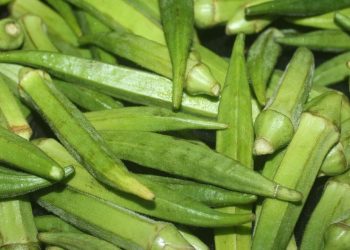Aqua Tofana occupies a singular place in the popular imagination of early-modern crime: a discreet, tasteless liquid that purportedly allowed wives to kill their husbands with minimal suspicion and disappear back into domestic life. The tale combines documented criminal proceedings, contemporaneous rumor, legal anxieties about household order, and later myth-making.
Unlike the dramatic stabbings and sword fights that occupied the courts and chronicles of the era, Aqua Tofana operated in the shadows of domestic life, slipped into soups, wines, and stews. What made it so infamous was not only its lethal potency but also the social anxieties it embodied: fear of women’s secret agency, the fragility of marriage, and the limits of law in a patriarchal society.
Historical context
To understand how Aqua Tofana came to matter, it helps to situate it in early-seventeenth-century Italy. Politically fragmented into duchies, principalities, and papal territories, Italian cities like Naples, Palermo, and Rome were densely populated urban centers where poverty, commerce, and close domestic quarters concentrated social tensions. Legal institutions – courts, magistrates, and inquisitorial processes – were active, but forensic science did not yet exist.
The household was a legal and moral unit in which patriarchal authority dominated; women had limited legal remedies for marital abuse, desertion, or economic insecurity. In that setting, clandestine remedies – abortifacients, abortive potions, and, reportedly, secret poisons – could be attractive to those for whom legal escape routes were closed. Poison had a special cultural resonance in early modern Europe: it was a feared, often feminized wrongdoing that threatened public order from within the intimate sphere of the home.
Authorities treated allegations of poisoning with alarm because poisons could be administered surreptitiously, confound medical diagnosis, and undermine confidence in the social order. This background helps explain both the popularity of stories about Aqua Tofana and the severity with which magistrates pursued suspected networks of poisoners.
Names, players and the problem of sources
The name “Aqua Tofana” is associated in historical narratives with a small network of women alleged to have produced and sold a liquid poison to wives who wished to rid themselves of abusive or unwanted husbands. Primary actors in contemporary reports include a woman named Teofania (or Thofania) d’Adamo and a later figure usually identified as Giulia (or Giulia Mangiardi/Toffana).
Historical records are fragmentary; court records, popular pamphlets, and later retellings often conflict. As with many early-modern crimes that became notorious, the boundary between fact and rumor is porous; the surviving documentation mixes legal testimony, confessions (sometimes obtained under torture), and sensational popular narratives.
One historically attested event often tied to the Aqua Tofana story is the trial and execution of a woman named Teofania d’Adamo in Palermo in the year commonly given as 1633. Contemporary accounts describe the arrest of several women accused of administering poison and the subsequent discovery of poison sales.
After Teofania’s execution, legends say that one of her associates – often given the name Giulia – escaped to Rome and marketed the poison there under a respectable name to conceal its lethal purpose. Whether Giulia was the same person as the earlier accused, a successor, or a fictional composite figure is debated among historians. The multiplicity of names and narratives illustrates the caution required when trying to write a single, neat history of Aqua Tofana.
What was Aqua Tofana?
Descriptions of Aqua Tofana emphasize several recurrent traits: it is a clear, tasteless liquid administered surreptitiously (often in food or drink), it produces symptoms that resemble natural disease or epidemic fevers, and it acts slowly enough to avoid immediate suspicion. Contemporary accounts suggested it produced vomiting and exhaustion, followed by a gradual decline leading to death, making the cause seem like consumption, a relapse, or other chronic ailments.
Modern forensic reconstruction is speculative because the original recipe – if one existed as a standardized formula – was not preserved in a reliably documented way. Several hypotheses have been suggested:
- Arsenical basis: Arsenic was widely available and widely used in the early modern period; chronic arsenic poisoning can cause gastrointestinal distress, skin changes, and progressive debilitation. Arsenic also deposits in the body (hair, nails), making it detectable by later chemical tests, but such tests were not available at the time.
- Alkaloid or plant toxins: Some narratives claim the inclusion of belladonna or other plant alkaloids; certain herbal poisons produce delirium, dry mouth, and pupil dilation rather than the protracted wasting illness commonly described.
- Mixtures and adulterants: Many early poisoners used combinations – metal salts (lead or arsenic), organic acids, and herbal extracts – to tune onset and presentation. A concoction could be designed to be slow-acting, produce symptoms consistent with common illnesses, and be stable at room temperature.
Rather than committing to a single chemical composition, a prudent historical account emphasizes that Aqua Tofana – if it was a standardized commodity – was probably a formulated mixture chosen for surreptitious administration, slow lethality, and the production of plausible naturalistic symptoms. The very uncertainty about its contents has contributed to its mythic status.
Distribution, clientele, and motives
Aqua Tofana is most commonly described as a commercialized poison, sold through a clandestine network and popular among women who felt trapped by abusive, cruel, or simply undesirable marriages. Motives described in trial testimony and popular accounts include domestic abuse, forced marriage, infidelity, and economic desperation.
In a society that gave women limited legal recourse and constrained mobility, clandestine solutions – poisons, secret abortions, or fleeing – were among the few available paths. Commercialization implies a degree of organization: sellers who manufactured and marketed a product under euphemistic or religious-sounding names, word-of-mouth distribution through female networks, and perhaps a clientele prepared to pay for discretion.
Contemporary pamphlets and later retellings suggest that the poison was marketed with pastoral or charitable cover – sold as a “cosmetic” or “purifier”— – o evade scrutiny. Whether this represents the reality of marketing strategies or the anxious imaginings of moralists depends on interpretation, but it reflects how early-modern societies tried to conceptualize hidden threats.
Detection, investigation and punishment
The discovery of poison rings in early modern Italy typically followed suspicious clusters of deaths, a loose confession by an arrested suspect, or denunciations driven by interpersonal disputes. Courts often conducted inquisitorial investigations; testimony sometimes came under duress. Medical practitioners – physicians and barber-surgeons – were consulted, but without chemical assays or consistent autopsy standards their opinions were limited.
The combination of social panic and legal authority produced dramatic trials and severe punishments: executions by public hanging, beheading, or burning were not uncommon for those convicted of poisoning. The legal handling of accused poisoners reveals the intersection of crime control, gendered anxieties, and the need to reassert public order.
Authorities sought to dismantle networks, punish culprits publicly to deter imitators, and placate a civic audience alarmed by the idea that private households – supposed safe havens – were hiding lethal threats. Yet because evidence often leaned on testimony from co-accused women and because confessions could be coerced, historians urge caution in taking all trial records at face value.
Myth, gender, and social anxieties
Aqua Tofana’s fame is inseparable from the gendered fears of early-modern societies. Poisoning was framed in contemporaneous discourse as a distinctly domestic crime – an emasculating threat that reversed the order of household power and allowed ostensibly powerless women to effect mortal harm. This framing resonated with anxieties about household discipline, marital obedience, and the invisibility of female agency.
The story was therefore attractive to pamphleteers and moralists who used it to warn against female craftiness and to admonish men to surveil their families more closely. At the same time, modern historians reread the narrative as a symptom of more complex social realities: women’s constrained options, the prevalence of intimate violence, and economic pressures that made marriage a precarious institution for many.
From this vantage, Aqua Tofana is not simply evidence of feminine malice but also an index of social structures that produced desperation. The mythologization of the poison – converting it into a quasi-legendary elixir – obscures the lived human tragedies at its center while simultaneously revealing what contemporaries feared most.
Cultural afterlife
Aqua Tofana inspired countless retellings: pamphlets, plays, and later literary adaptations transformed the historical episodes into moral dramas. The theme of the deadly domestic potion fits neatly into broader European fascination with poisoning as a motif of betrayal and hidden violence – from the ancient poisonings in Roman histories to the Baroque stage’s preoccupation with vice concealed beneath decorum. In the modern period, Aqua Tofana appears in historical novels, crime histories, and popular retrospectives that often emphasize the sensational elements – secret recipes, disguised vials, and networks of female conspirators.
This cultural afterlife has two consequences. First, it perpetuates certain untested assumptions – about a single “perfect” recipe, about a monolithic cabal of poisoners, or about the scale of the phenomenon. Second, it keeps alive questions about agency, gender, and law: why would women turn to poison, how did legal institutions respond, and what does the focus on female poisoners say about early modern anxieties?
Modern forensic and historiographical perspectives
Contemporary forensic toxicology could, in principle, identify the residues of metals or alkaloids in exhumed remains, but ethical and practical obstacles limit such investigations in many historical cases. Historians therefore rely on a triangulation of court records, physician testimony, pamphlets, and broader social history. Over the last several decades, scholarship has shifted toward contextualization: rather than treating Aqua Tofana as a narrow tale of criminality, scholars analyze it in terms of household power dynamics, gendered labor markets, and legal culture.
This historiographical turn reframes Aqua Tofana as a window into the dilemmas of ordinary people in a constrained society. It also cautions against simple moralizing: many accusations of poisoning may have reflected interpersonal vendettas, economic disputes, or judicial eagerness to produce a public spectacle of punishment.
Reflections and ethical considerations
The story of Aqua Tofana forces contemporary readers to wrestle with uncomfortable questions. On the one hand, deliberate killing remains a grave moral and legal wrong and should be treated as such in historical analysis. On the other hand, recounting these episodes solely as lurid scandal risks erasing the structural conditions – male violence, economic coercion, and lack of legal remedies – that led some to contemplate desperate solutions. A balanced historical account, therefore, combines careful attention to evidence with sensitivity to the broader social matrix.
The legend also shows how fear and rumor can amplify a phenomenon beyond what the evidence strictly supports. The resonance of Aqua Tofana in later centuries – its evocation in novels, plays, and sensational histories – demonstrates the human appetite for narratives that turn the domestic into the uncanny. But it also signals the need for a critical approach that separates courtroom theater from well-supported historical claim.
Conclusion
Aqua Tofana remains both a historical episode and a powerful symbol. Historically, it reflects documented episodes of poisoning, legal prosecutions, and the sometimes-tragic fates of individuals enmeshed in early-modern social constraints. Symbolically, it has become shorthand for secretive domestic violence disguised as natural illness, for the ways in which marginalized actors can shape events through clandestine means, and for the cultural fascination with crimes that invert domesticated trust.
Because contemporary sources are fragmentary and often colored by sensationalism and gendered anxieties, any definitive account must be cautious. The most productive approach is multidisciplinary: combining legal history, social context, toxicological plausibility, and cultural analysis. Seen this way, the story of Aqua Tofana is not merely an anecdote of murder but a prism through which to examine power, desperation, and the fragile boundary between private suffering and public order in early-modern Europe.


































































































































































































